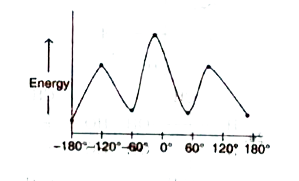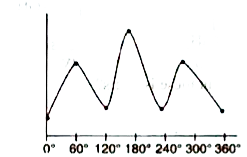In which of the following cases the, potential energy is defined?
both conservative and non-conservative forces
conservative force only
non-conservative force only
Neither conservative nor-conservative forces
The correct Answer is:B
To determine in which cases potential energy is defined, we need to understand the nature of forces involved. Here’s a step-by-step solution:
Step 1: Understand Potential Energy
Potential energy is the energy stored in an object due to its position in a force field, such as gravitational or elastic fields. It is defined in relation to conservative forces.
Step 2: Identify Conservative Forces
Conservative forces are those forces for which the work done is independent of the path taken and depends only on the initial and final positions. Examples include gravitational force and spring force.
Step 3: Analyze the Options
- Option A: Both conservative and non-conservative forces.
- This is incorrect because potential energy is not defined for non-conservative forces, as they depend on the path taken.
- Option B: Conservative forces only.
- This is correct because potential energy is defined only in the context of conservative forces.
- Option C: Non-conservative forces only.
- This is incorrect as potential energy cannot be defined in the context of non-conservative forces.
- Option D: Neither conservative nor non-conservative forces.
- This is also incorrect because potential energy is indeed defined for conservative forces.
Step 4: Conclusion
Based on the analysis, the correct answer is Option B: Conservative forces only.
Potential energy is the energy stored in an object due to its position in a force field, such as gravitational or elastic fields. It is defined in relation to conservative forces.
Conservative forces are those forces for which the work done is independent of the path taken and depends only on the initial and final positions. Examples include gravitational force and spring force.
- Option A: Both conservative and non-conservative forces.
- This is incorrect because potential energy is not defined for non-conservative forces, as they depend on the path taken.
- Option B: Conservative forces only.
- This is correct because potential energy is defined only in the context of conservative forces.
- Option C: Non-conservative forces only.
- This is incorrect as potential energy cannot be defined in the context of non-conservative forces.
- Option D: Neither conservative nor non-conservative forces.
- This is also incorrect because potential energy is indeed defined for conservative forces.
Based on the analysis, the correct answer is Option B: Conservative forces only.
Topper's Solved these Questions
- BOOK - DC PANDEY ENGLISHCHAPTER - WORK, ENERGY AND POWEREXERCISE - CHECK POINT 6.310videos
WORK, ENERGY AND POWER
- BOOK - DC PANDEY ENGLISHCHAPTER - WORK, ENERGY AND POWEREXERCISE - EXERCISES(TAKING IT TOGETHER)83videos
WORK, ENERGY AND POWER
- BOOK - DC PANDEY ENGLISHCHAPTER - WORK, ENERGY AND POWEREXERCISE - CHECK POINT 6.120videos
WORK, ENERGY AND POWER
- BOOK - DC PANDEY ENGLISHCHAPTER - WORK, ENERGY & POWEREXERCISE - Level 2 Comprehension Based2videos
WORK, ENERGY & POWER
- BOOK - DC PANDEY ENGLISHCHAPTER - WORK, POWER AND ENERGYEXERCISE - E Integer Type Questions11videos
WORK, POWER AND ENERGY
Similar Questions
Knowledge Check
- Question 1 - Select One
Which of the following is not a form of potential energy ?
AFoodBWater in a damCA muscle contractingDAll of these - Question 2 - Select One or More
Which of the following plots is/are correct?
A B
B C
C DAll are incorrect
DAll are incorrect
which of the following case entropy increases
View SolutionIn which of the following cases entropy decreases?
View SolutionWhen a cell is fully turgid, which of the following will be zero
The potential energy of water is referred to asView SolutionFor which of the following cases, answer is 4
View SolutionIn which of the following cases can the work done increase the potential energy?
View SolutionWhich of the following is potential energy diagram for SN1 reaction?
View Solution

